How do you know if you have an underwatered aloe plant?
Aloe Vera plants have plentiful water in their leaves as they can store an abundant amount.
While outdoor Aloe Vera plants require more water, their indoor counterparts, however, do not.
Climate, planting location, and the current season can all collectively cause the Aloe Vera plant – whether inside or outside – to become dehydrated.
Let’s find out!
Table of Contents
How to Tell if Your Aloe Plant is Underwatered?
If your Aloe plant is not getting enough water, it will have drooping and curled leaves. The potting soil will be warm to touch and dry. There will be a distinct yellowing and browning at the tip of the leaves.
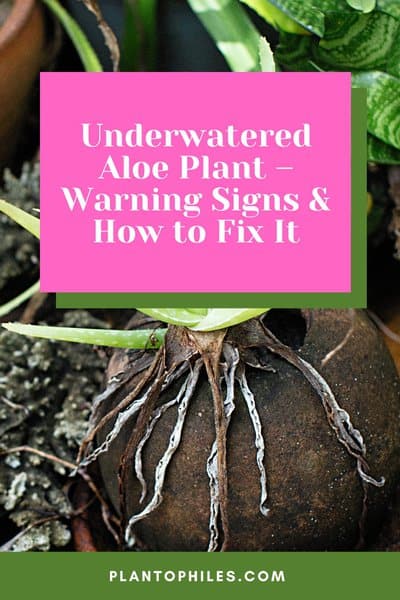
Symptoms of Underwatered Aloe Vera
Aloe Vera plants cannot tolerate dehydration for a long time.
You can tell if your plant is dehydrated by identifying the following signs:
1. Yellow Leaves
The Aloe Vera‘s leaves lose their ability to absorb both essential nutrients and moisture from the soil when they turn yellow.
This is because the yellowing indicates that the leaves are losing their chlorophyll content.
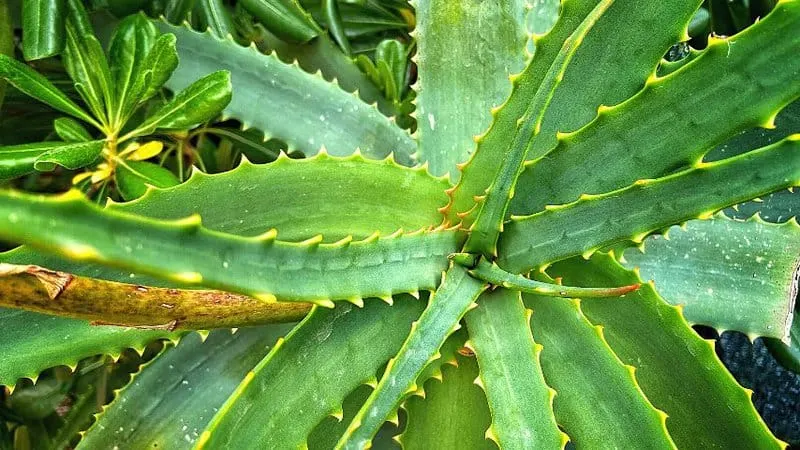
It also indicates that the roots have used all of their remaining energy in pulling water up to the plant and that it is now, as a whole, underwatered.
The yellow will not always be a distinct shade. Sometimes, certain nutrient deficiencies in plants also cause yellowing leaves.
No matter the cause, the color’s appearance should be considered a warning. Not, however, in the case of younger leaves that are yellow due to lack of calcium, zinc, or copper.
2. Wilting Leaves
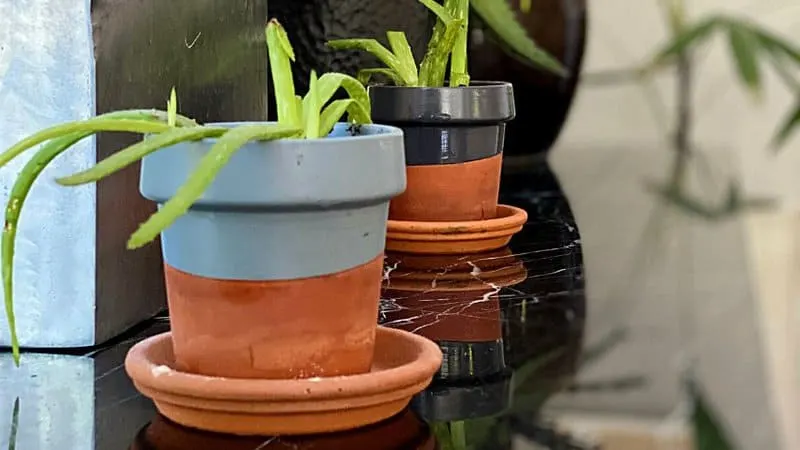
When an Aloe Vera plant is underwatered, it may begin to wilt. This droopiness occurs when the plants’ cells lose their turgidity.
This causes them to shrink and lose their shape. Be warned that this droopiness may convert to long-term wilting should you not nip the issue in the bud.
Excess dehydration will lead to severe wilting. At a certain point, your Aloe Vera leaves will become easily breakable.
3. Browning of Leaf Tips
Browning of leaves does not only mean fertilizer burn. Aloe leaves turn brown also because of lacking chlorophyll and dehydration.
The tips of leaves are the last of the entire plant to receive water, which is why they are the first that will begin to yellow, later brown.
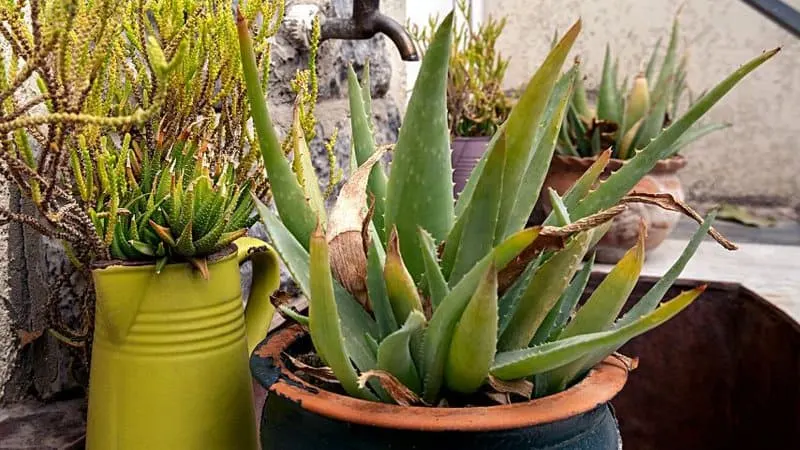
In short, they suffer collateral damage.
4. Dried Up Soil
Another sign of Aloe Vera dehydration is dried-up soil. You will need to confirm this, though, for sometimes there still may be water in the pores at the bottom, yet none above.
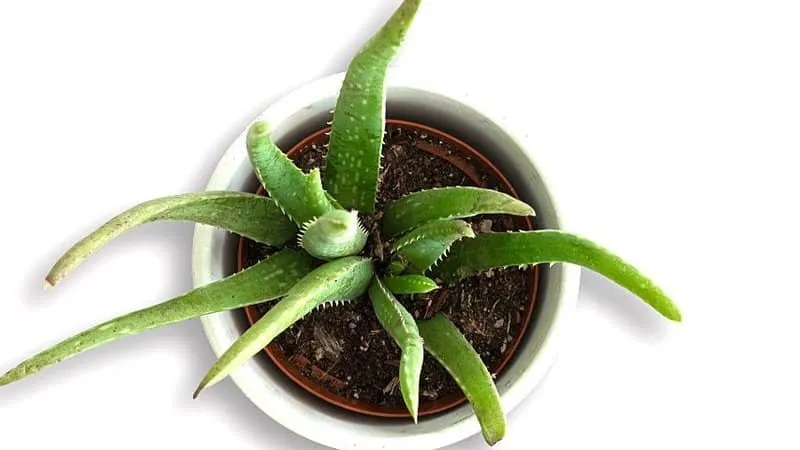
You will know dried soil when you touch some.
It also leans on the fact that some plants need more water for them to thrive than others. But dried up soil, nonetheless, will affect the ability of roots to take in and transport water.
5. Brittle Roots
Obviously, roots suffer the most when a plant is dehydrated. They turn brittle when they cannot draw water from the soil anymore.
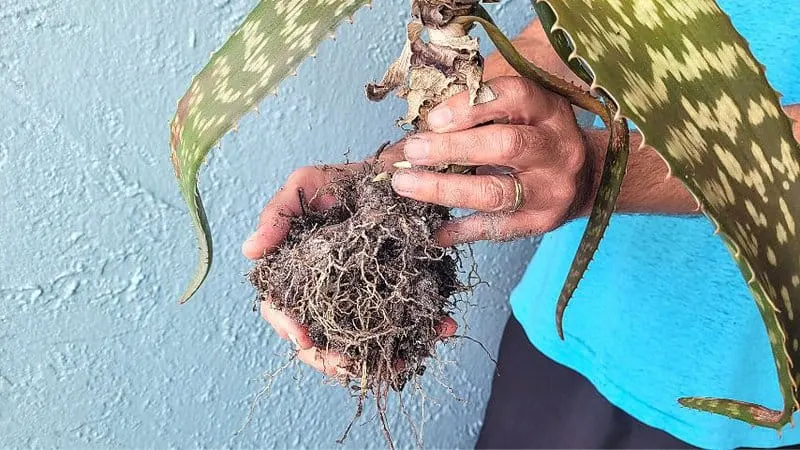
In the absence of water, their texture changes, and they harden.
Roots turning brittle is the last call – your Aloe plant has suffered major dehydration.
Saving an Underwatered Aloe Plant
An Aloe plant needs sufficient watering for it to flourish.
Have a look at our article “How often should I water an Aloe plant” to get a good grasp on how much water your Aloe needs.
Also, to promote healthy growth, one must not deviate from a well-maintained growing schedule.
Since we can take only preventative measures, you will need to act fast if you start to notice any of the symptoms we have listed above.
Follow the steps below.
1. Take the Plant out of the Pot
The first and foremost thing that needs doing is taking the underwatered Aloe Vera plant from the soil.
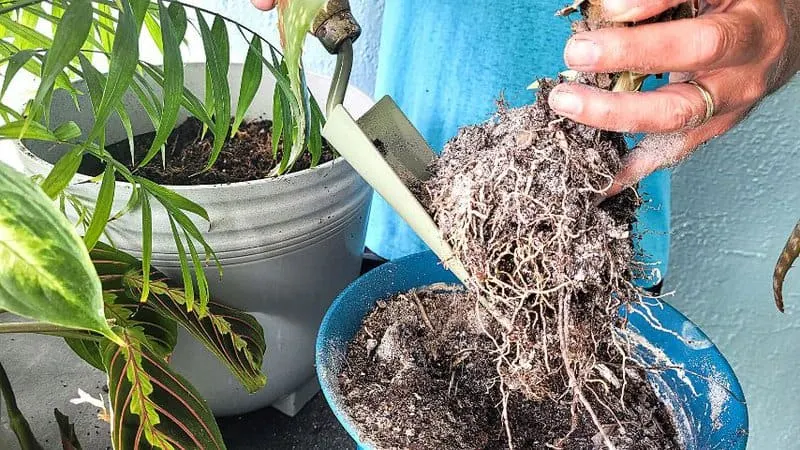
How can you do this?
Turn the pot upside down and ever-so-gently pat the bottom so that the plant comes outside.
2. Immerse the Roots In Water
Fill a bowl with water, then immerse the roots of your Aloe plant in it for at least 2 days.
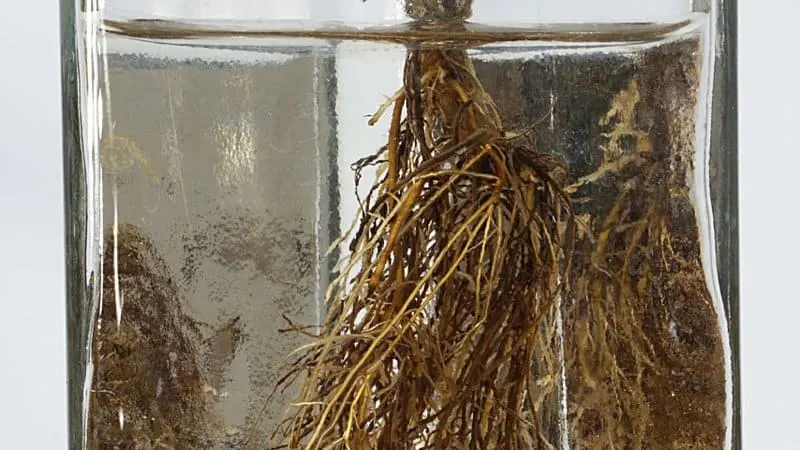
Severe dehydration is hard to recover from. Immersing the roots in water – purified, cold water – is the only way to aim at minimizing the damage.
This will also help your plant to go back to square one, a clean slate, if you will.
3. Cut Off All Discolored Parts
The discoloration will only grow. You need to cut off any discolored part from the leaves to nip the discoloration in the bud.
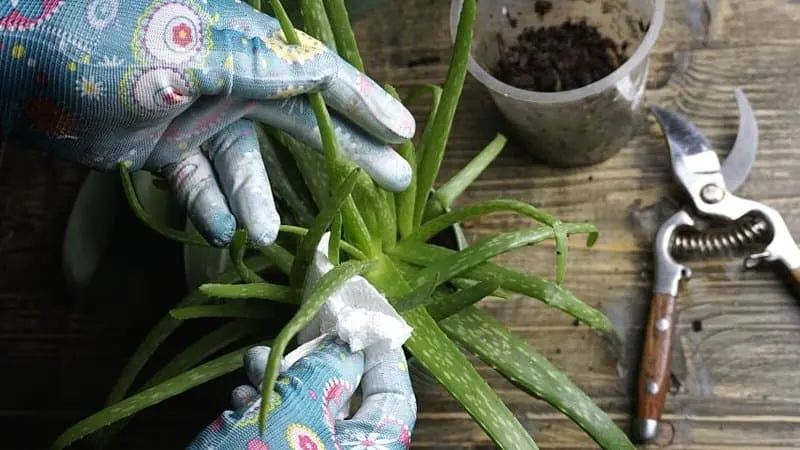
This discoloration feeds off nutrients – same as the healthy leaves. Pruning them means you are preventing their growth.
4. Choosing a Well-Drained Soil
It is now time to do some repotting on your Aloe Vera plant. Moving on, pick the right Aloe Vera watering frequency.
Why?
Because you’re not totally out of trouble yet. Your Aloe plan can still turn yellow, or worse, brown.
You will have to emulate Aloe’s natural growth environment.
Try getting cacti soil instead of regular potting soil. This will prevent any stress from engulfing the plant.
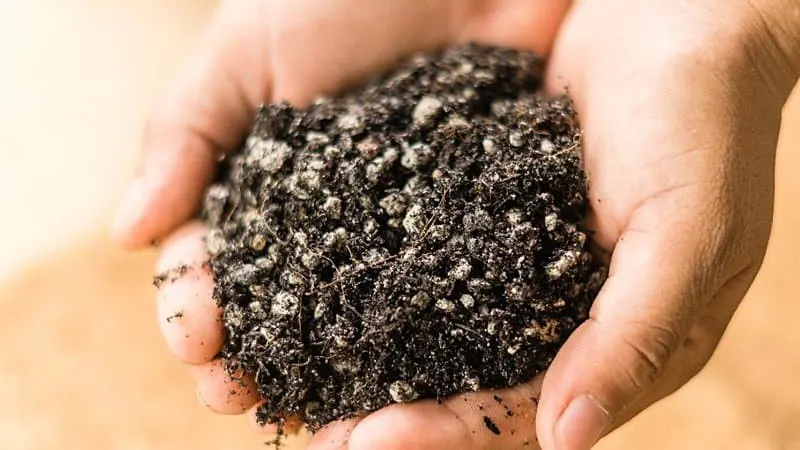
5. Repot In a Better Pot
Because we are talking about changes, let’s change the Aloe Vera’s pot, too. Aloe Vera roots need room.
If your previous planter was too small, it prevented the roots from spreading. Well spread-out roots ensure that they receive enough water from all ends of the plant.
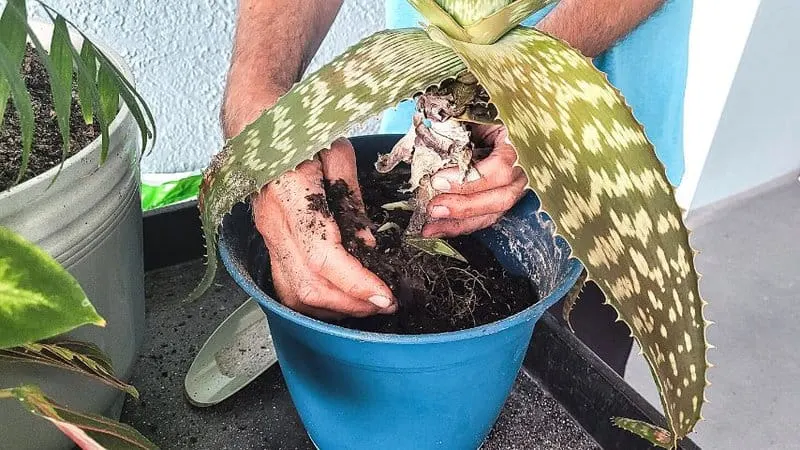
You need to pick a pot that has just enough room for housing water and also enough for the roots to take it in and transport.
Potting also depends on what kind of area you are living in.
People living in warm areas can go for plastic containers, too, poking a hole or two at the bottom for easy drainage.
But if you live in a colder climate, clay pots are what you should aim for – not plastic.
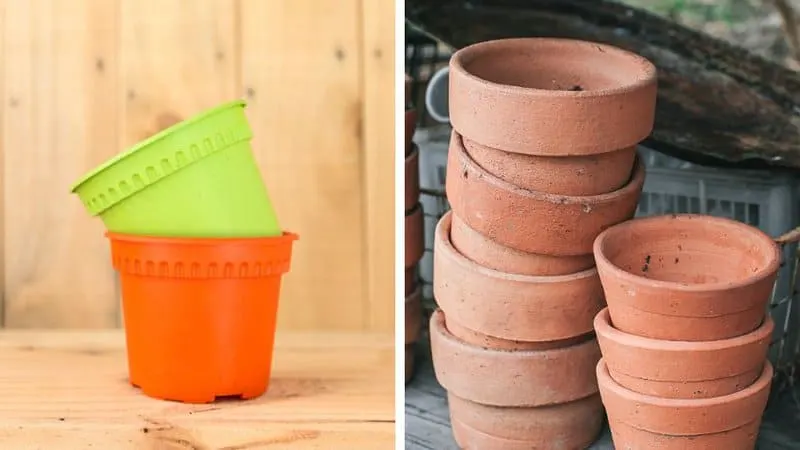
Frequently Asked Questions About Underwatered Aloe
Can I underwater my Aloe plant?
A low-maintenance plant is more likely than most to suffer the consequences of underwatering. You need to, on average, water an Aloe plant every 2-3 weeks. What worsens this underwatering are your Aloe’s age, the climate that you live in, the size of the pot, and soil type, too.
What signs will my Aloe plant show me if it needs watering?
The yellowing and browning of the aloe vera leaves will be the first visible indicators that it is underwatered. Then, check the soil for moisture levels. If dry, it means that the plant has suffered a major drought. Check the roots for brittle texture as they’re a final indicator of underwatering.
How can I make my Aloe plant recover from underwatering?
Stick to a consistent watering schedule. But, make sure you do not overwater the Aloe plant as waterlogging can also cause problems. Opt to water your Aloe plant every two to three weeks. Furthermore, to avoid the spread of discoloration, make sure to cut away any discolored parts from the leaves.

Daniel has been a plant enthusiast for over 20 years. He owns hundreds of houseplants and prepares for the chili growing seasons yearly with great anticipation. His favorite plants are plant species in the Araceae family, such as Monstera, Philodendron, and Anthurium. He also loves gardening and is growing hot peppers, tomatoes, and many more vegetables.


